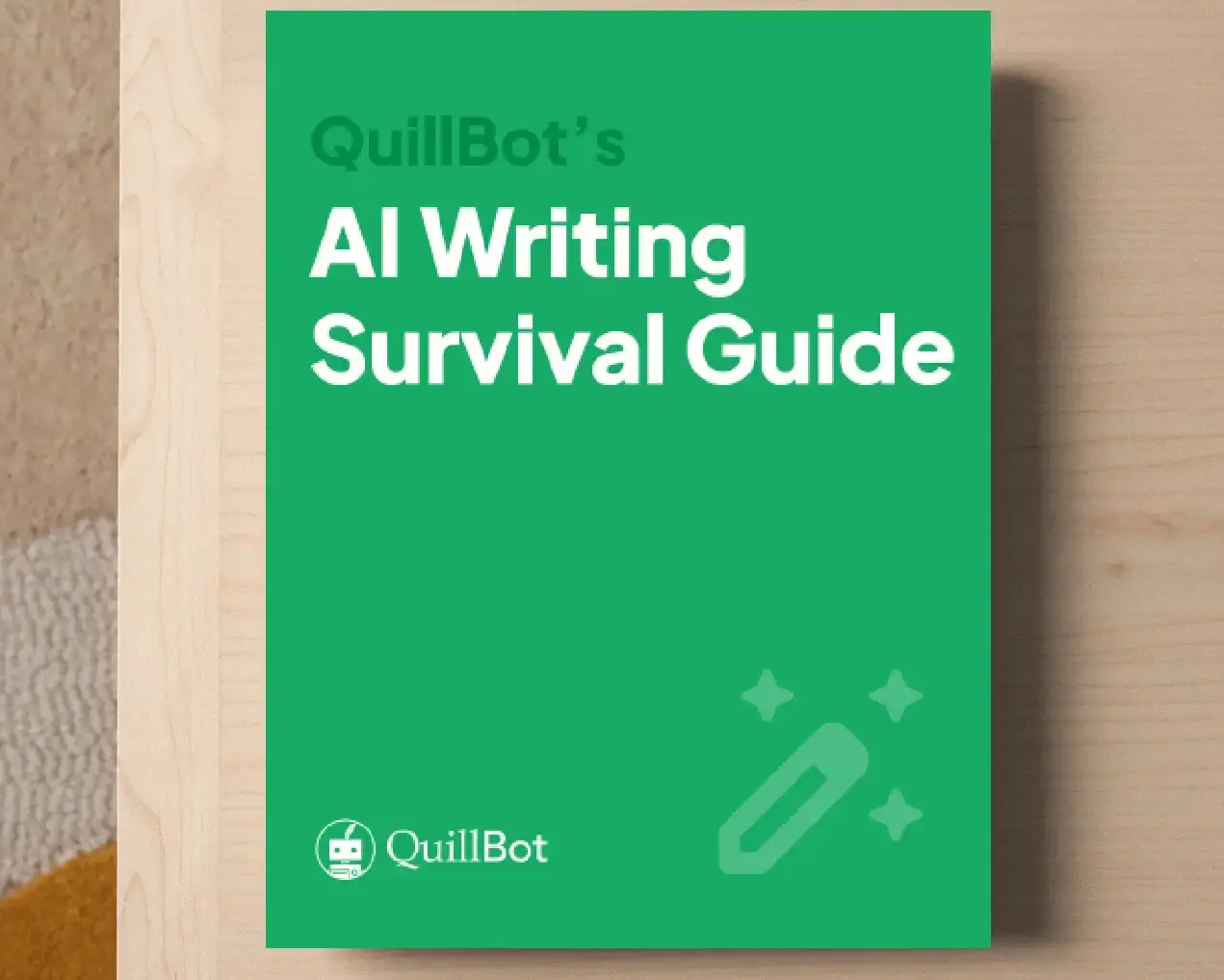How to Use AI Prompt Generators | Tips & Tools
Anyone who’s used an AI tool has likely experienced the frustration of getting a response that’s not quite what you were looking for. Oftentimes, the secret to unlocking the power of generative AI lies in prompt engineering—building instructions that guide these models towards creating the outputs you want.
Believe it or not, you can actually use AI to build the prompts you provide to AI. Tools like QuillBot’s free AI prompt generator take your rough ideas and turn them into detailed, specific prompts that help you get the most out of AI tools.
What makes a good AI prompt?
Effective AI prompts should be clear, specific, and goal-oriented. It’s important to tell the model exactly what you want and how you want it delivered. The quality of your prompt will affect the quality of the AI’s response, no matter what you’re using it for.
Below is a breakdown of what makes a strong prompt:
Clarity
As impressive as they may be, AI tools cannot read your mind. To ensure that you’re getting the output you want, it’s important to be clear on what you’re looking for.
What’s the difference between golden retrievers and yellow labs?
Though the output of this prompt will provide you a lot of information, it may not be optimized to your situation. For example, you might get details on the history of these breeds that are less relevant to considering one as a pet. Consider how this prompt offers an improvement:
Compare the pros and cons of adopting a golden retriever versus a yellow lab for a family with small children.
In this prompt, it’s much clearer what type of information you’re looking for, and the AI will respond accordingly.
Specificity
Specificity goes hand in hand with clarity. A huge advantage of AI tools is that they can provide you information in a specific format. For example, you might specify the tone, length, or structure of the output you’re looking for.
Summarize this article.
The goal of this prompt is clear, but it could be greatly improved to better suit your needs. Adding the following details will let the AI know what kind of response you’re looking for.
Summarize this article in three bullet points, using language a 12-year-old could understand.
This updated prompt will help generate a response that is short and easy to understand.
Defined goals
If you’re using an AI tool to help write something, be sure to specify your goals. Consider the following goals:
- Create a list of ideas
- Rewrite for clarity
- Summarize key points
- Write a cover letter for this job posting, using my attached resume
Refinement
To maximize the utility of AI tools, one of the best things you can do is to provide instructions to refine the output. For example, you might ask the AI to update its tone (e.g., add emojis and make it more casual) or to provide more information (e.g., give me five more ideas, but make them weirder).
Using an AI prompt generator
If remembering all of the things that make a good prompt feels overwhelming, there’s a quick fix! It doesn’t get much more meta than using an AI to write a prompt for an AI, but prompt generators are actually a very helpful tool that can translate your needs into clear, actionable prompts.
Prompt generators take your rough ideas and turn them into detailed prompts that you can adjust to ensure you’re getting exactly what you want from the AI. Just describe what you need, and it will create an optimized prompt for you.
Consider the following example of the output you can get from QuillBot’s free AI prompt generator:
Prompt generator example
Frequently asked questions about AI prompt generators
- What is the point of AI prompt generators?
-
Using an AI tool to create prompts for another AI tool might seem a bit circular, but AI prompt generators actually provide an effective way to maximize the outputs you get from AI.
Tools like QuillBot’s free AI prompt generator take your rough ideas and turn them into clear, specific, and goal-oriented prompts that let you get the most out of generative AI.
- What makes a good AI prompt?
-
An AI prompt is the instructions you provide an AI, whether you want to create a Shakespearean rap or generate an explanation of fluid dynamics that a five-year-old could understand. The detail and structure of your prompt can greatly influence the outputs you get.
Prompt engineering is the process of creating prompts that guide an AI towards creating what you need. A strong prompt should be clear, specific, and goal-driven. In other words, a prompt should describe what you need, how you want it formatted, and what you’re trying to accomplish.
If creating optimized prompts seems overwhelming, why not try an AI prompt generator? Tools like QuillBot’s free AI prompt builder take the guesswork out of writing prompts that help you get the most out of generative AI.
- What is the difference between AI and generative AI?
-
The difference between AI and generative AI is that traditional AI follows specific rules to perform a task, but generative AI creates new content.
The first type of AI included programs that made decisions based on rules (in the same way as a human expert), such as determining a person’s credit score.
A later development, machine learning AI, classifies or predicts outcomes based on patterns. An example of machine learning is Netflix recommendations that are based on your previous viewing habits.
Generative AI tools combine machine learning with natural language processing technology. They learn from underlying patterns and use that information to “decide” what details to include in a paragraph, image, or other output. Examples of generative AI tools that create new content include ChatGPT and Gemini.
Generative AI tools are useful for brainstorming, prewriting, and paraphrasing, but they should never be used for writing entire assignments.
QuillBot’s AI Checker Android App and AI Checker iOS App can help you ensure that the writing you submit for class assignments is based on your own writing voice and ideas.
- What should I include in a cover letter prompt?
-
When using AI to write a cover letter, including the following elements in your cover letter prompt to a tool like QuillBot’s free cover letter generator will help it create a personalized letter that’s tailored to the opportunity:
- A request that AI bases the cover letter on the job posting, your resume, and information from the company’s website (that you’ve uploaded or pasted into the chat with your personal data removed)
- How long the cover letter should be
- The keywords you want to include to optimize the letter for an applicant tracking system
- The key aspects of your resume that you want to showcase
- A description of the tone you want to achieve (e.g., “neutral professional tone”)
Cite this Quillbot article
We encourage the use of reliable sources in all types of writing. You can copy and paste the citation or click the "Cite this article" button to automatically add it to our free Citation Generator.
QuillBot. (2025, August 20). How to Use AI Prompt Generators | Tips & Tools. Quillbot. Retrieved November 22, 2025, from https://quillbot.com/blog/ai-writing-tools/how-to-use-ai-prompt-generators/


